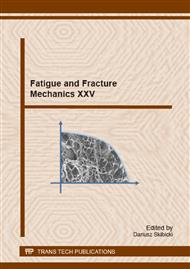p.226
p.232
p.238
p.244
p.249
p.255
p.261
p.267
p.276
Numerical and Experimental Examination of Ballistic System Subjected to IED Explosion
Abstract:
This article presents results of experimental validation of complex phenomenon of blast wave and fragment impact on protective panel. Protective panel was made of HTK900K steel and Dyneema HB50 polyethylene. Standard level 1 IED surrogate was used. Test was conducted with regards to NATO STANAG 4569 and NATO AEP 55 standardizations. Computational analysis was performed using LS-DYNA code using explicit time integration scheme. Properties of steel, polyethylene and glue were obtained during laboratory tests. Steel was modeled using simplified Johnson-Cook model whereas polyethylene was modeled as composite material. Both blast wave and fragment impact was implemented in simulation. Good agreement between experimental and numerical data was obtained.
Info:
Periodical:
Pages:
276-285
Citation:
Online since:
November 2014
Authors:
Price:
Сopyright:
© 2015 Trans Tech Publications Ltd. All Rights Reserved
Share:
Citation:


